-
 Bitcoin
Bitcoin $106,731.2224
-1.05% -
 Ethereum
Ethereum $2,444.9804
-1.20% -
 Tether USDt
Tether USDt $1.0003
0.01% -
 XRP
XRP $2.1882
0.09% -
 BNB
BNB $651.1435
-0.61% -
 Solana
Solana $148.3252
-2.09% -
 USDC
USDC $1.0000
0.01% -
 TRON
TRON $0.2787
0.55% -
 Dogecoin
Dogecoin $0.1598
-3.16% -
 Cardano
Cardano $0.5520
-2.43% -
 Hyperliquid
Hyperliquid $39.0960
-2.64% -
 Bitcoin Cash
Bitcoin Cash $516.9519
2.98% -
 Sui
Sui $2.7011
-2.95% -
 Chainlink
Chainlink $13.0582
-1.71% -
 UNUS SED LEO
UNUS SED LEO $8.9250
-2.53% -
 Stellar
Stellar $0.2359
-0.18% -
 Avalanche
Avalanche $17.3856
-3.73% -
 Toncoin
Toncoin $2.8095
-3.56% -
 Shiba Inu
Shiba Inu $0.0...01121
-1.95% -
 Litecoin
Litecoin $85.2795
-0.85% -
 Hedera
Hedera $0.1471
-2.15% -
 Monero
Monero $319.8004
1.12% -
 Dai
Dai $1.0001
0.01% -
 Ethena USDe
Ethena USDe $1.0001
0.02% -
 Bitget Token
Bitget Token $4.5344
-1.07% -
 Polkadot
Polkadot $3.3224
-2.96% -
 Uniswap
Uniswap $6.9697
-2.75% -
 Aave
Aave $266.1658
-2.25% -
 Pepe
Pepe $0.0...09414
-3.41% -
 Pi
Pi $0.4913
-3.29%
Does Keystone Pro support NFT storage and trading?
The Keystone Pro securely stores Ethereum-based NFTs but does not support direct trading; users must use external platforms for buying and selling NFTs.
Apr 06, 2025 at 01:07 pm
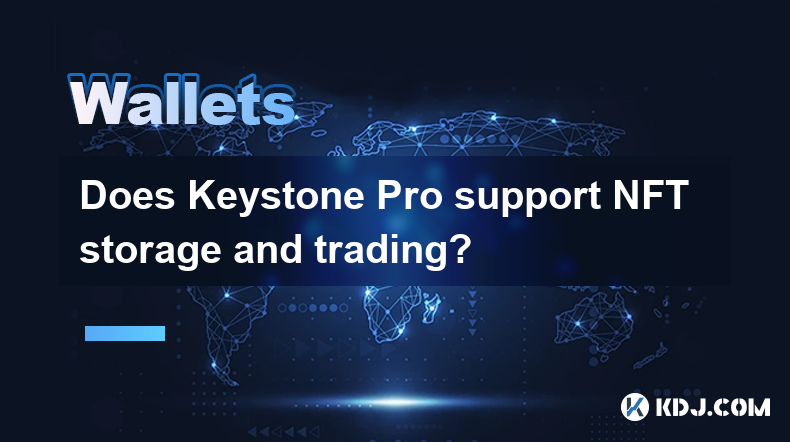
The Keystone Pro, a hardware wallet designed for secure cryptocurrency storage, has garnered attention for its robust security features and user-friendly interface. A common question among users is whether the Keystone Pro supports NFT storage and trading. In this article, we will delve into the capabilities of the Keystone Pro regarding NFTs, exploring its features, limitations, and how users can interact with NFTs using this device.
Understanding NFTs and Their Importance
Non-Fungible Tokens (NFTs) are unique digital assets that represent ownership or proof of authenticity of a specific item or piece of content, typically stored on a blockchain. Unlike cryptocurrencies such as Bitcoin or Ethereum, which are fungible and interchangeable, NFTs are distinct and cannot be exchanged on a one-to-one basis. The rise of NFTs has led to a surge in demand for secure storage and trading solutions, prompting users to explore whether devices like the Keystone Pro can meet these needs.
Keystone Pro: An Overview
The Keystone Pro is a hardware wallet that prioritizes security and ease of use. It supports a wide range of cryptocurrencies, including Bitcoin, Ethereum, and various ERC-20 tokens. The device is designed to keep private keys offline, reducing the risk of hacking and unauthorized access. Users can manage their assets through the Keystone Pro's companion mobile app, which provides a seamless interface for viewing balances, sending and receiving funds, and managing transactions.
NFT Storage on Keystone Pro
When it comes to NFT storage, the Keystone Pro does offer support for storing NFTs that are based on the Ethereum blockchain. Since most NFTs are ERC-721 or ERC-1155 tokens, which are built on Ethereum, users can store these NFTs securely on their Keystone Pro. To store an NFT on the Keystone Pro, follow these steps:
- Open the Keystone Pro app on your mobile device.
- Connect your Keystone Pro to the app via Bluetooth.
- Navigate to the "Assets" section and select "Add Token."
- Enter the contract address of the NFT you wish to add. This information can usually be found on the NFT's marketplace or in your wallet where the NFT is currently stored.
- Confirm the addition of the NFT to your Keystone Pro. Once added, the NFT will appear in your asset list, and you can view its details and ownership status.
NFT Trading with Keystone Pro
While the Keystone Pro excels at secure storage, trading NFTs directly through the device is not currently supported. The Keystone Pro is primarily designed as a cold storage solution, meaning it keeps your assets offline and secure. For trading NFTs, users must rely on external platforms and marketplaces. However, the Keystone Pro can still play a crucial role in the trading process by providing a secure way to store and manage the private keys associated with your NFTs.
To trade an NFT using the Keystone Pro, follow these steps:
- Access the NFT marketplace on your computer or mobile device where you wish to trade your NFT.
- Connect your Keystone Pro to the marketplace using the device's companion app. This typically involves scanning a QR code generated by the marketplace to sign transactions.
- Initiate the trade on the marketplace, selecting the NFT you wish to sell or trade.
- Confirm the transaction using your Keystone Pro. The device will generate a signature that you can use to authorize the trade without exposing your private keys.
Security Considerations for NFT Storage and Trading
Security is paramount when dealing with NFTs, given their unique and often valuable nature. The Keystone Pro offers several security features that make it an excellent choice for NFT storage:
- Offline Storage: By keeping your private keys offline, the Keystone Pro minimizes the risk of hacking and unauthorized access.
- Secure Element Chip: The device uses a Secure Element chip, which is a tamper-resistant hardware component designed to protect sensitive data.
- Air-Gapped Transactions: The Keystone Pro supports air-gapped transactions, allowing you to sign transactions without connecting to the internet, further enhancing security.
When trading NFTs, it's essential to use reputable marketplaces and to double-check all transaction details before confirming them with your Keystone Pro. Always ensure that you are interacting with the correct contract addresses and that the transaction fees are reasonable.
Limitations of Keystone Pro for NFT Enthusiasts
While the Keystone Pro is an excellent tool for secure NFT storage, it does have some limitations that users should be aware of:
- No Direct Trading: As mentioned earlier, the Keystone Pro does not support direct NFT trading. Users must use external platforms for buying and selling NFTs.
- Limited Blockchain Support: The Keystone Pro primarily supports Ethereum-based NFTs. If you own NFTs on other blockchains, you may need to use different hardware wallets or software solutions.
- User Interface: While the Keystone Pro's app is user-friendly, some users may find the process of adding and managing NFTs slightly more complex than using a software wallet designed specifically for NFTs.
Conclusion
The Keystone Pro offers robust support for storing Ethereum-based NFTs, providing users with a secure and offline solution for managing their digital assets. While direct trading of NFTs is not supported, the device can still be used to securely sign transactions on external marketplaces. By understanding the capabilities and limitations of the Keystone Pro, users can make informed decisions about how to best manage their NFT collections.
Frequently Asked Questions
Q: Can I store NFTs from blockchains other than Ethereum on the Keystone Pro?
A: Currently, the Keystone Pro primarily supports Ethereum-based NFTs (ERC-721 and ERC-1155 tokens). If you own NFTs on other blockchains, you may need to use different hardware wallets or software solutions that support those specific blockchains.
Q: Is it possible to view my NFTs directly on the Keystone Pro device?
A: No, you cannot view your NFTs directly on the Keystone Pro device. You can view and manage your NFTs through the Keystone Pro's companion mobile app, which connects to the device via Bluetooth.
Q: How do I ensure the security of my NFTs when using the Keystone Pro?
A: To ensure the security of your NFTs, always keep your Keystone Pro offline when not in use, use the Secure Element chip for added protection, and sign transactions using the air-gapped method. Additionally, double-check all transaction details on external marketplaces before confirming them with your Keystone Pro.
Q: Can I use the Keystone Pro to sign transactions for NFT minting?
A: Yes, you can use the Keystone Pro to sign transactions for NFT minting. You would need to initiate the minting process on an external platform and then use the Keystone Pro to securely sign the transaction without exposing your private keys.
Disclaimer:info@kdj.com
The information provided is not trading advice. kdj.com does not assume any responsibility for any investments made based on the information provided in this article. Cryptocurrencies are highly volatile and it is highly recommended that you invest with caution after thorough research!
If you believe that the content used on this website infringes your copyright, please contact us immediately (info@kdj.com) and we will delete it promptly.
- Tether, Bitcoin, and the Public Listing Frenzy: A New Era for Corporate Crypto?
- 2025-07-02 04:30:12
- Token Yugijo, Coin Flips & Meme Coins: What's Hot?
- 2025-07-02 04:30:12
- Powell, Stablecoin Regulation, and Circle's Bold Move: A New York Minute on Crypto's Future
- 2025-07-02 02:30:12
- Ethereum Price, Tom Lee, and Bitcoin: A New Era for Crypto?
- 2025-07-02 02:30:12
- Hoskinson, Ripple, Cardano DeFi: A New Era of Collaboration?
- 2025-07-02 02:35:12
- BlockDAG, ALGO, and the Crypto Trends Shaping 2025
- 2025-07-02 01:50:12
Related knowledge
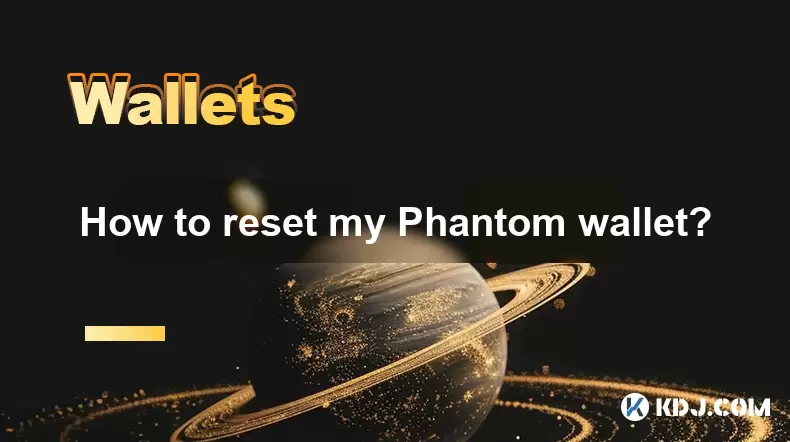
How to reset my Phantom wallet?
Jul 02,2025 at 12:36am
Understanding the Need for Resetting Your Phantom WalletIf you're using a Phantom wallet, you may encounter situations where resetting your wallet becomes necessary. This could be due to forgotten passwords, seed phrase issues, or account corruption. Phantom is a non-custodial wallet primarily used for interacting with the Solana blockchain, and it stor...
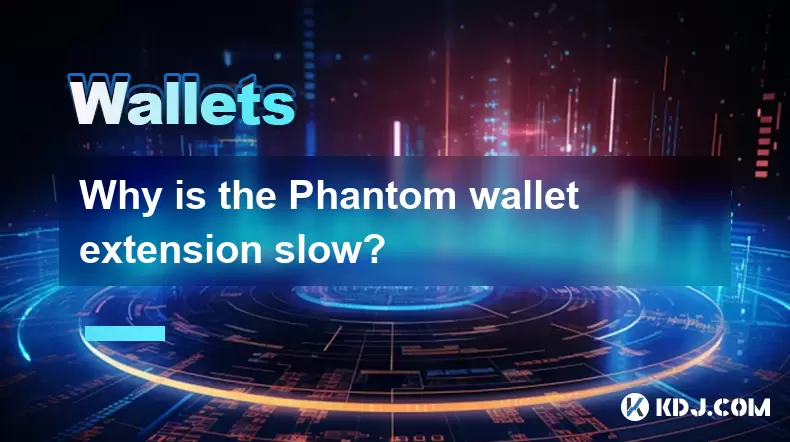
Why is the Phantom wallet extension slow?
Jul 02,2025 at 04:15am
Phantom Wallet Extension: Why Is It Slow?Phantom wallet is a widely used browser extension for interacting with decentralized applications (dApps) on the Solana blockchain. Despite its popularity, some users report that the Phantom wallet extension runs slowly at times. This article delves into potential reasons behind this performance issue and provide...
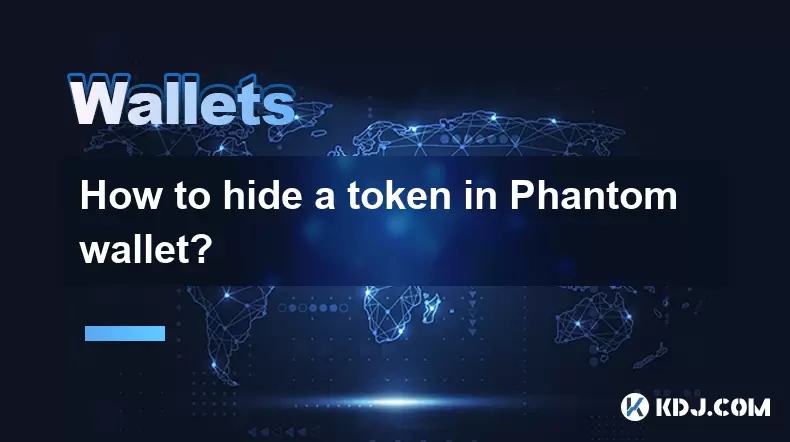
How to hide a token in Phantom wallet?
Jul 01,2025 at 05:49pm
Understanding the Phantom Wallet InterfacePhantom wallet is a popular non-custodial wallet used primarily for interacting with the Solana blockchain. It allows users to store, send, receive, and manage various tokens, including both fungible and non-fungible tokens (NFTs). Before attempting to hide a token, it's essential to understand how the wallet in...
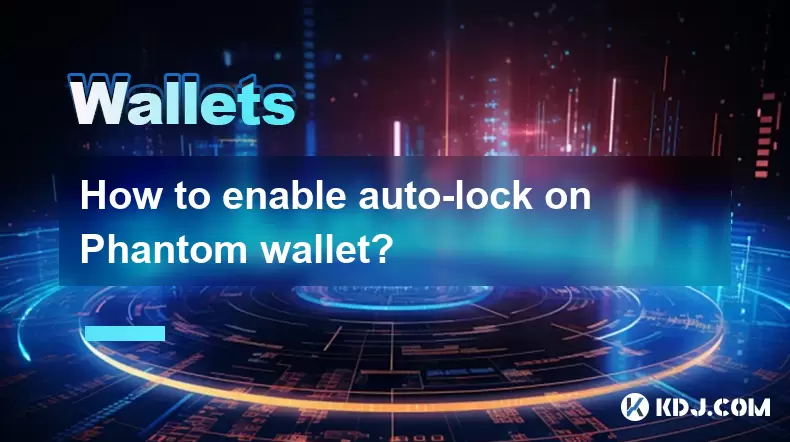
How to enable auto-lock on Phantom wallet?
Jul 01,2025 at 04:01pm
What is Auto-Lock in Phantom Wallet?Phantom wallet is a popular non-custodial cryptocurrency wallet used primarily for interacting with the Solana blockchain. One of its security features includes the ability to set an auto-lock timer, which ensures that the wallet locks itself automatically after a period of inactivity. Auto-lock enhances security by p...
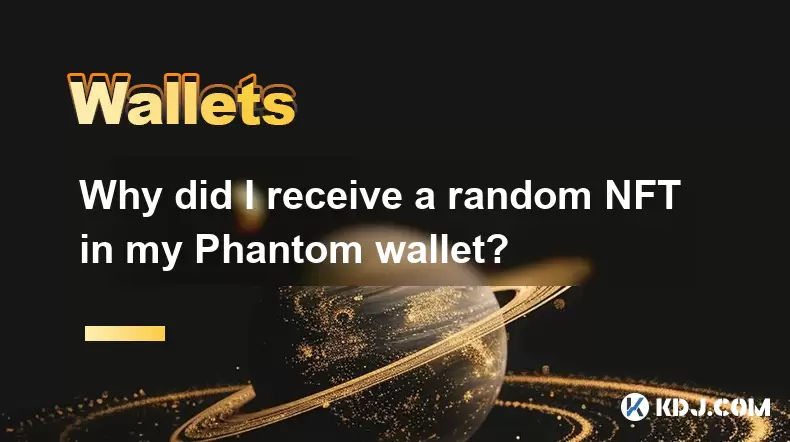
Why did I receive a random NFT in my Phantom wallet?
Jul 01,2025 at 09:00pm
Receiving an Unexpected NFT in Your Phantom WalletIf you've recently opened your Phantom wallet and noticed an unfamiliar NFT appearing in your collection, you're not alone. Many users have reported receiving random or unsolicited non-fungible tokens, often without any prior interaction with the project or sender. This phenomenon has become increasingly...
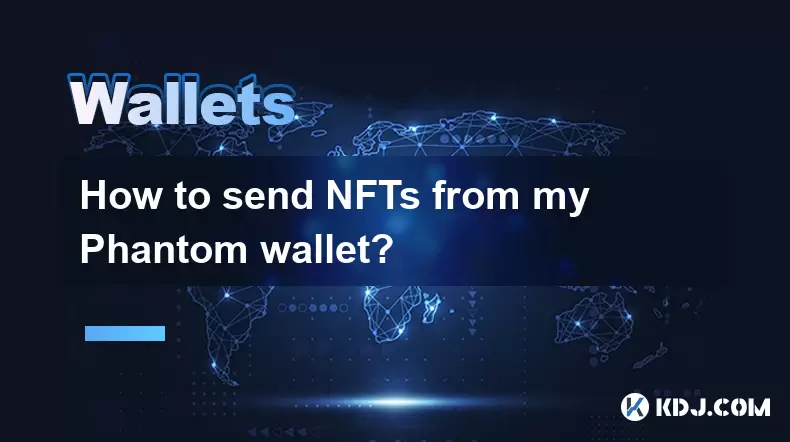
How to send NFTs from my Phantom wallet?
Jul 02,2025 at 03:15am
What is Phantom Wallet and Why Use It for NFT Transfers?Phantom wallet is a non-custodial cryptocurrency wallet primarily used for interacting with the Solana blockchain. It supports both tokens and NFTs, making it a popular choice among users who engage in decentralized finance (DeFi) or digital collectibles. The interface is user-friendly, allowing ev...

How to reset my Phantom wallet?
Jul 02,2025 at 12:36am
Understanding the Need for Resetting Your Phantom WalletIf you're using a Phantom wallet, you may encounter situations where resetting your wallet becomes necessary. This could be due to forgotten passwords, seed phrase issues, or account corruption. Phantom is a non-custodial wallet primarily used for interacting with the Solana blockchain, and it stor...

Why is the Phantom wallet extension slow?
Jul 02,2025 at 04:15am
Phantom Wallet Extension: Why Is It Slow?Phantom wallet is a widely used browser extension for interacting with decentralized applications (dApps) on the Solana blockchain. Despite its popularity, some users report that the Phantom wallet extension runs slowly at times. This article delves into potential reasons behind this performance issue and provide...

How to hide a token in Phantom wallet?
Jul 01,2025 at 05:49pm
Understanding the Phantom Wallet InterfacePhantom wallet is a popular non-custodial wallet used primarily for interacting with the Solana blockchain. It allows users to store, send, receive, and manage various tokens, including both fungible and non-fungible tokens (NFTs). Before attempting to hide a token, it's essential to understand how the wallet in...

How to enable auto-lock on Phantom wallet?
Jul 01,2025 at 04:01pm
What is Auto-Lock in Phantom Wallet?Phantom wallet is a popular non-custodial cryptocurrency wallet used primarily for interacting with the Solana blockchain. One of its security features includes the ability to set an auto-lock timer, which ensures that the wallet locks itself automatically after a period of inactivity. Auto-lock enhances security by p...

Why did I receive a random NFT in my Phantom wallet?
Jul 01,2025 at 09:00pm
Receiving an Unexpected NFT in Your Phantom WalletIf you've recently opened your Phantom wallet and noticed an unfamiliar NFT appearing in your collection, you're not alone. Many users have reported receiving random or unsolicited non-fungible tokens, often without any prior interaction with the project or sender. This phenomenon has become increasingly...

How to send NFTs from my Phantom wallet?
Jul 02,2025 at 03:15am
What is Phantom Wallet and Why Use It for NFT Transfers?Phantom wallet is a non-custodial cryptocurrency wallet primarily used for interacting with the Solana blockchain. It supports both tokens and NFTs, making it a popular choice among users who engage in decentralized finance (DeFi) or digital collectibles. The interface is user-friendly, allowing ev...
See all articles

























































































